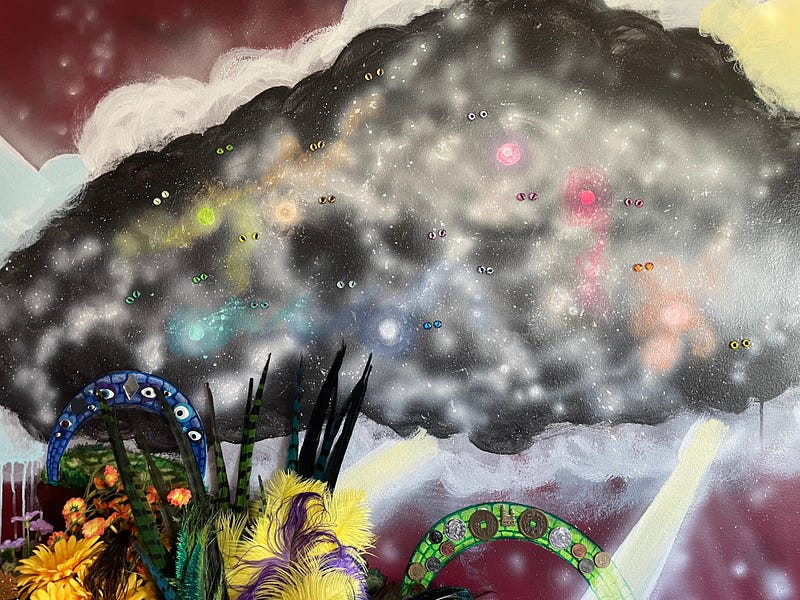Creating Space for Joyful Living: The Power of Decluttering
Written on
Chapter 1: The Value of Space
Marie Kondo's book, "The Life-Changing Magic of Tidying Up," gained significant popularity upon its release. I noticed the surge in copies at my local library, prompting me to borrow one and read it. While some ideas seemed far-fetched, I realized I had accumulated a lot of unnecessary items—things I was clinging to both physically and emotionally. So, I decided to give her decluttering technique a genuine effort, sorting through my belongings in search of what truly sparked joy. I ended up donating clothes to thrift shops, returning books to the library, and recycling old electronics.
While I successfully cleared out a considerable amount of clutter, Kondo may have missed a crucial aspect of joy—something intangible that cannot be held: space itself. Space is not merely emptiness; it is defined by its boundaries, such as floors and ceilings, along with the air and dust that fill it. Essentially, space represents potential. A clear desk invites new projects, while an open area in a room can transform into a yoga space, a jam session, or a home video studio. Space is where all the action unfolds.
There’s a strong connection between the concepts of time and space within our homes. As our living areas become cluttered, we often find ourselves pressed for time as well. This correlation is no accident. The more clutter we accumulate, the more time we spend on mundane activities just to manage it. Ironically, the time required to declutter often feels elusive.
One significant insight I gained during my tidying journey was the realization that I was keeping many books I had no intention of reading; instead, I merely wished I had read them. This distinction in verb tense is crucial. The joy I sought was often absent because I wasn't willing to invest my time in these items in the present. I yearned for a future where I had conquered classic literature, mastered knitting, and completed all my workout videos without giving up halfway.
Once I recognized that many of my possessions were not worth my time, it became easier to let them go. You can foster a reciprocal relationship between your space and your time. Reflect on whether the items occupying your space are also deserving of your time and vice versa. Allocate more space to what you cherish, thus increasing the time you invest in those activities.
Here's a simple approach to achieving this:
- Create a Time and Space Grid: On paper, draw a grid with 16 rows and 7 columns representing your waking hours. Fill in your daily activities and their locations. Once complete, identify activities you wish to engage with more and consider where you'd perform them. If it’s harder to reach than your couch, guess where you’ll likely end up most days.
- Assess Your Space: Walk through your home and observe what takes up the most room. Determine whether these items are worth your time and if you'd prefer to part with them.
- Prioritize What Matters: Identify the activities and items that you genuinely want to spend time with daily. Position these prominently in your space, making them as easily accessible as a cozy couch.
- Repeat as Necessary: Continue this process until you feel satisfied with your space.
While this method may not be as captivating as an entire book about folding clothes or cherishing old garments, it captures the essence of making room for more time and joy. By taking inventory of your belongings, you can make informed adjustments.
Not everything in your space needs to ignite joy. For instance, when I decided to prioritize my writing and art, I created more space for them and made them readily available. I hung unfinished paintings on the walls to motivate myself to complete them, even cutting out sections I no longer wanted to see. These pieces may not bring joy yet, but they remind me of pursuits I genuinely enjoy.
I also painted a large mural on one wall as a daily reminder of my creative potential. The mural features a cosmic cloud, with playful eyes peering out, symbolizing ideas waiting to take form.

Now, these little creative projects gaze back at me from the wall, patiently awaiting their moment.
Thank you for taking the time to read this. I welcome your thoughts in the comments! If you're interested in more insights on beautiful workspaces and creativity, please subscribe.
Chapter 2: Exploring the Unknown in Space
The first video, "Weird Things Begin to Happen When You Go into Deep Space," explores the peculiar phenomena that occur in the vastness of space, prompting curiosity and reflection on our understanding of the universe.
The second video, "STP177 - Space Policy - AKA How Things Happen In Space," featuring Casey Dreier, dives into the intricacies of how space policies shape our exploration and activities in the cosmos.